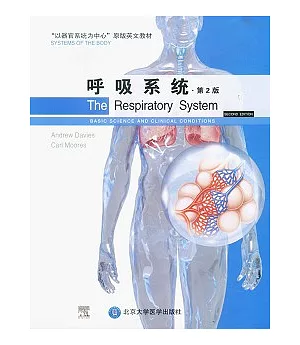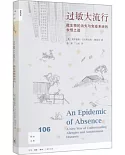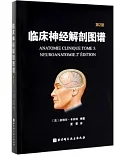1 INTRODUCTION
Introduction
What is respiration?
The need for respiration
Diffusion in respiration and the circulation
Timing in the circulation and respiration
Basic science of respiration
Drugs
2 STRUCTURE OF THE RESPIRATORY SYSTEM,RELATED TO FUNCTION
Introduction
The upper airways
The intrathoracic airways
Blood vessels
Pulmonary hypertension
The lymphatics
The nerves
Gross structure of the respiratory system
Pleurisy
The diaphragm and chest wall
How breathing is brought about
Embryology
Air-conditioning
Metabolic activity
Metabolism of circulating biologically active substances
Non-respiratory functions
3 ELASTIC PROPERTIES OF THE RESPIRATORY SYSTEM
Introduction
Intrapleural pressure (Ppl)
Static lung compliance (CL)
The effect of disease
The physical basis of lung compliance
4 AIRFLOW IN THE RESPIRATORY SYSTEM
Introduction
How airflow is brought about
The nature of airflow
The major determinant of flow - radius
Airways resistance and obstructive pulmonary disease
The clinical situation
Sites of airways resistance
Asthma and airways smooth muscle
Bronchomotor tone
Pharmacological treatment of asthma
Clinical definitions
Bronchitis and mucus
Emphysema and radial traction
Intrapleural pressure and cough
Clinical tests for changes in resistance
Work of breathing
5 VENTILATION OF THE RESPIRATORY SYSTEM:THE IMPORTANCE OF ITS LACK OF UNIFORMITY IN DISEASE
Introduction
Spirometric abnormalities in disease
Uneven distribution
Dead space.
Alveolar dead space in disease
The Bohr equation
Factors affecting physiological dead space
Alveolar ventilation and respiratory exchange
The alveolar gas equation
Distribution of inspired gas
Other factors influencing distribution
6 GAS EXCHANGE BETWEEN AIR AND BLOOD:DIFFUSION
The path from air to tissue
Lung disease and diffusion
Fick’s Law of Diffusion
Measuring transfer factor
Treating diffusion difficulties
Carbon dioxide and other gases
7 THE PULMONARY CIRCULATION:BRINGING BLOOD AND GAS TOGETHER
The functions of the pulmonary circulation
The anatomy of the pulmonary circulation
Matching ventilation and perfusion
Distribution of blood flow through the lungs
Regional differences in ventilation in the lungs
Ventilation/perfusion matching and its effect on blood
O and CO content
Shunt
8 CARRIAGE OF GASES BY THE BLOOD AND ACID/BASE BALANCE
Introduction
Oxygen transport
Dissolved oxygen:do we really need Hb and why
keep it in red cells?
Carbon dioxide transport
Acid-base balance
9 CHEMICAL CONTROL OF BREATHING
Introduction
Oxygen lack
Carbon dioxide excess
10 NERVOUS CONTROL OF BREATHING
Introduction
The rhythm generator
Pattern of breathing in COPD
The respiratory ’centres’
The medullary groups
Conscious control of breathing
Respiratory muscle innervation
Neuromuscular disorders
Vagal reflexes
Dyspnoea
Other reflexes
11 LUNG FUNCTION TESTS:MEASURING DISABILITY
Introduction
Spirometry
Flow measurements
Plethysmography
Lung mechanics
Transfer factor(diffusing capacity)
Blood gases
Gas washouts
Exercise testing
Challenge tests
Appendix:some basic science
Glossary
Index




























